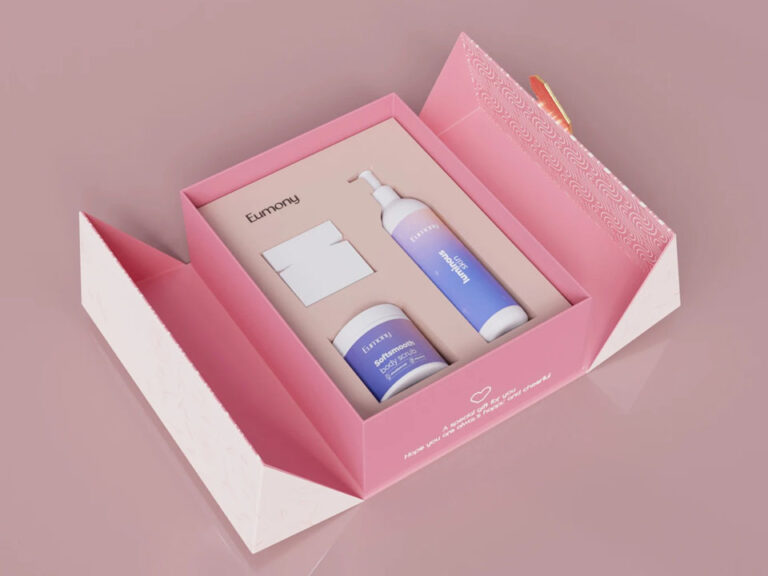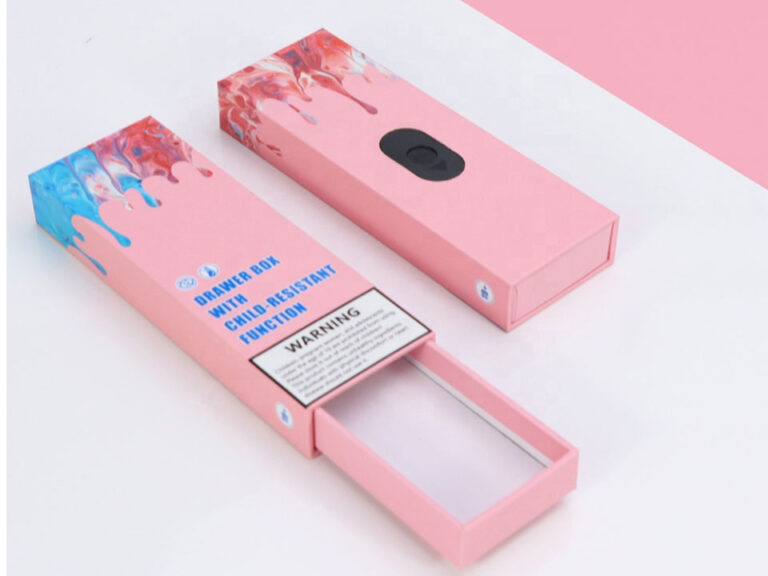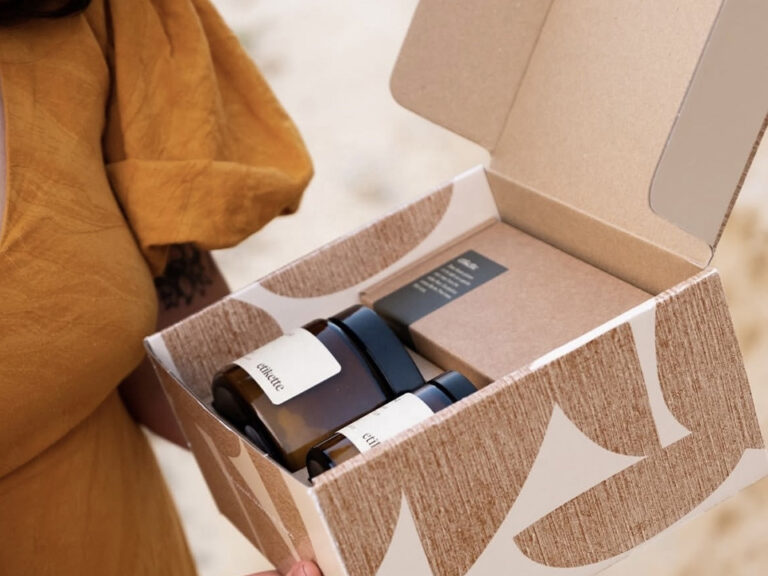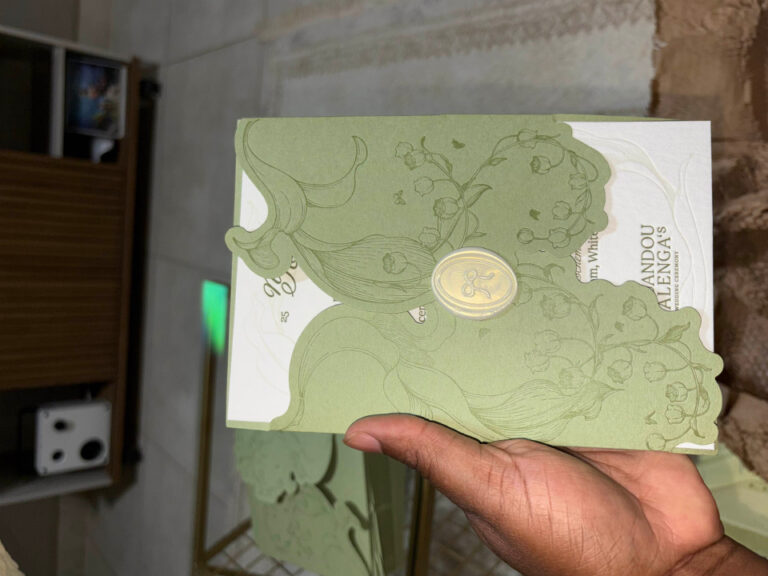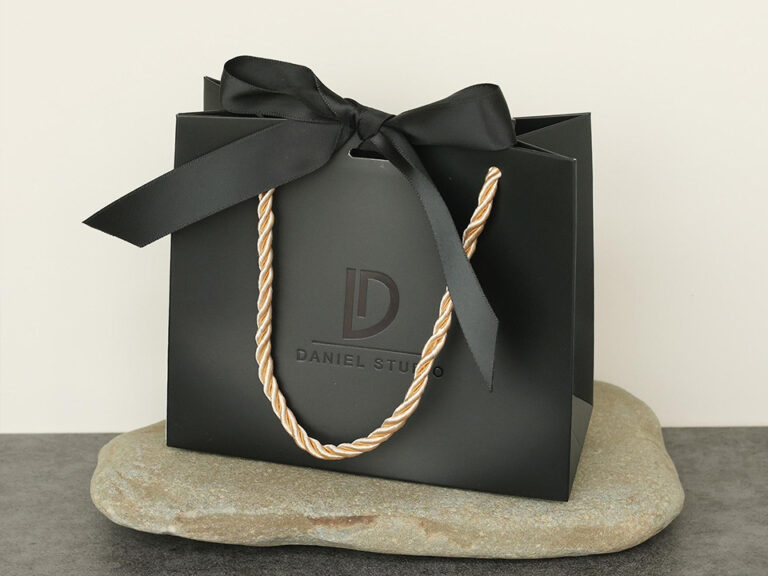How To Custom A Paper Tube Box For Your Products
Hi, I’m your future paper tube box. I’m round, sturdy, and a little bit vain about my outfit. Dress me right and I’ll protect your goodies, whisper your brand story, and look gorgeous on retail shelves. Let’s walk (roll?) through how to custom me—materials, dimensions, printing, finishes, and all the smart little options that make me your packaging.
Table of Contents
What Your Supplier Will Ask First
Any serious tube maker will start by confirming three things:
- Materials requests (strength + outside look)
- Dimension requests (fit + stackability)
- Printing requests (brand color + design effects)
Nail these and the rest flows nicely—surface finishing, inner linings, caps, bottoms, inserts, handles, the whole kit.
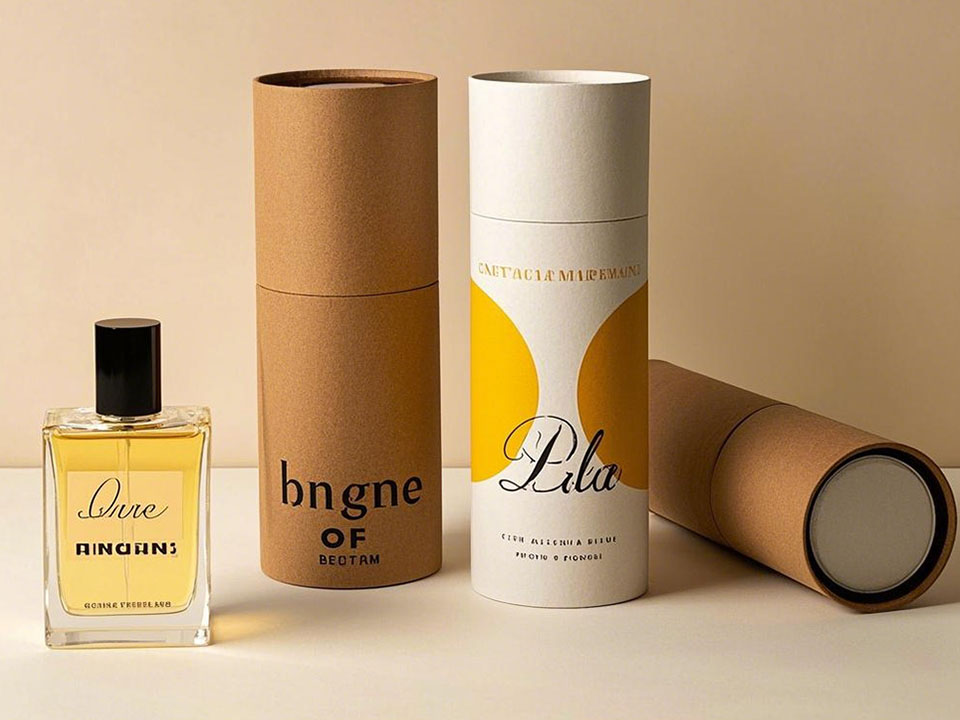
Materials 101: I’m built from two layers
1) Base paper = strength
The base is typically grey rigid board (a.k.a. chipboard). Thicker board = higher crush strength and better load-bearing. Choose based on your product’s weight and how you’ll ship/store it.
Common Greyboard Specs
| Grammage (GSM) | Approx. Thickness |
|---|---|
| 300 | 0.5 mm |
| 600 | 1.0 mm |
| 1200 | 1.5 mm |
| 1500 | 2.0 mm |
| 1800 | 2.5 mm |
Tip: If your item is heavy or tall (wine, big candles, cosmetics sets), choose thicker base. If it’s small/light (tea tins, lip balm), you can keep things leaner.
2) Mounted paper = look & feel
This is my outfit—the visible layer that carries your print and finishes.
- Art paper (white/black): all-rounder; supports offset/UV, foil, spot UV, emboss, matte/gloss/soft-touch lamination.
- Kraft paper: eco-forward vibe; great for food and wellness; uncoated, tactile.
- Metallic paper (silver/gold): premium sheen for cosmetics & fragrance.
- Fancy stocks: glitter, holographic, linen/“leatherette” textures—often stunning even with minimalist print.
Want inspo? Browse real use cases under our paper tube packaging category, from coffee beans to cosmetics.
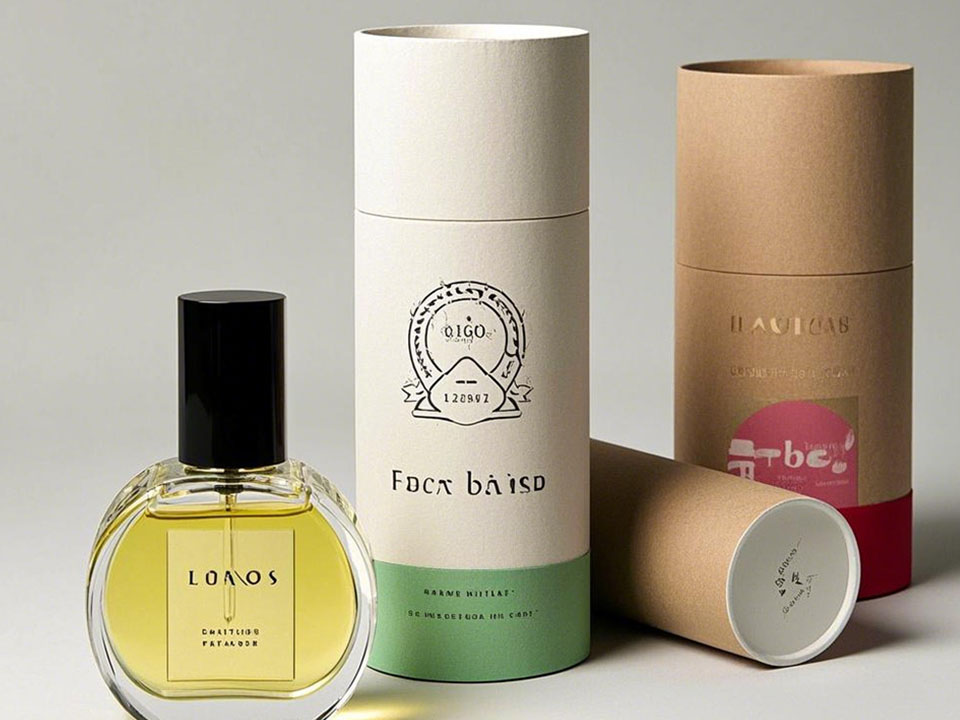
Dimensions: speak the same language as your factory
To build the dieline and ensure a glove-fit, share:
- Inner Diameter (ID): the actual space your product sits in
- Outer Diameter (OD): affects shelf footprint & shipping trays
- Body Height: the main barrel
- Cap Height: how much the lid overlaps
Fit rule of thumb: ID should be just a tiny bit larger than your product’s max width (allowing for label seams, shrink film, or tiny manufacturing tolerances). If you’re unsure, send a photo + the product’s exact size; a good supplier will recommend the right ID/height combo and can run a quick white sample.
Printing Requests: how to keep color honest
Share your vector design files (AI/PDF), with 3–5 mm bleed, a safe area, and all text outlined. For color:
- CMYK for images; Pantone for critical spot logos.
- If you need deep blacks on matte paper, ask for a rich black build.
- White ink on kraft or metallic stocks pops like crazy (but test first).
- Foil areas should be their own solid vector plates.
Don’t overcomplicate if you don’t need to—simple, high-contrast layouts often look the most expensive (wild, I know).
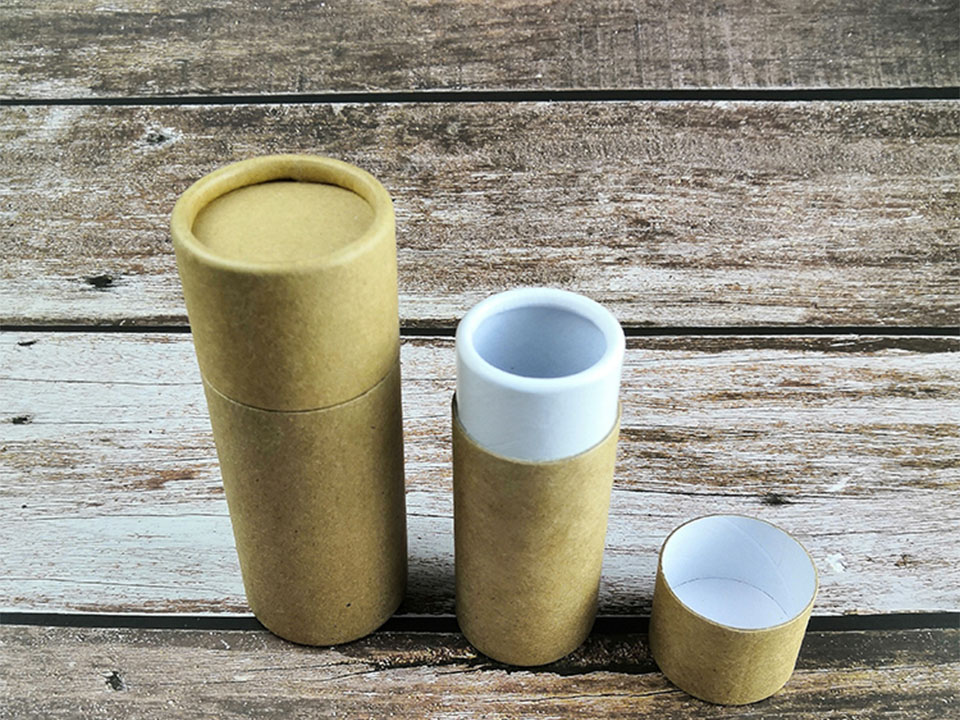
Surface Finishing: dress to impress
- Lamination: matte (understated), gloss (vivid), or soft-touch (velvety).
- Foil stamping: gold, silver, rose-gold, holographic, etc.
- Spot UV: shiny accents over matte; great for patterns.
- Emboss/Deboss: tactile logo you can feel with eyes closed.
- Textured papers: sometimes skip lamination for natural touch.
Eco note: some laminations can complicate recycling; if sustainability is a priority, consider water-based coatings or unlaminated premium papers and keep metalized bits to small accents.
Need a luxury look reference? See our black cylinder glossy tube for argan oil bottles or matte coffee bean tube with air valve.
Structure Options: lids, linings, bottoms
Tube Caps
Flat-edge, rolled-edge, windowed lids, metal caps, easy-peel/easy-pull, plastic buckles, tinplate lids—choose based on how you want customers to open me and whether you need tamper-evidence.
See also glossy paper tube cartridge box for a clean, retail-ready top.
Inner Wall
- Food-grade kraft
- Aluminum foil barrier
- PE-coated liners
- Plain eco cardboard for non-food items
Food and coffee folks often add a valve or foil liner for aroma + moisture control. Check eco-friendly tube for cocoa & coffee for an example.
Bottom Styles
Tinplate plug, tinplate flat bottom, all-paper crimped heat-seal, all-paper curled, all-paper flat bottom.
- All-paper bottoms are great for curbside recycling.
- Metal bottoms feel premium and add durability for heavier stuff.
For drops or essential oils, peek at 50ml dropper bottle kraft cylinder. For tea or pantry, cardboard cylinder for tea is a classic.
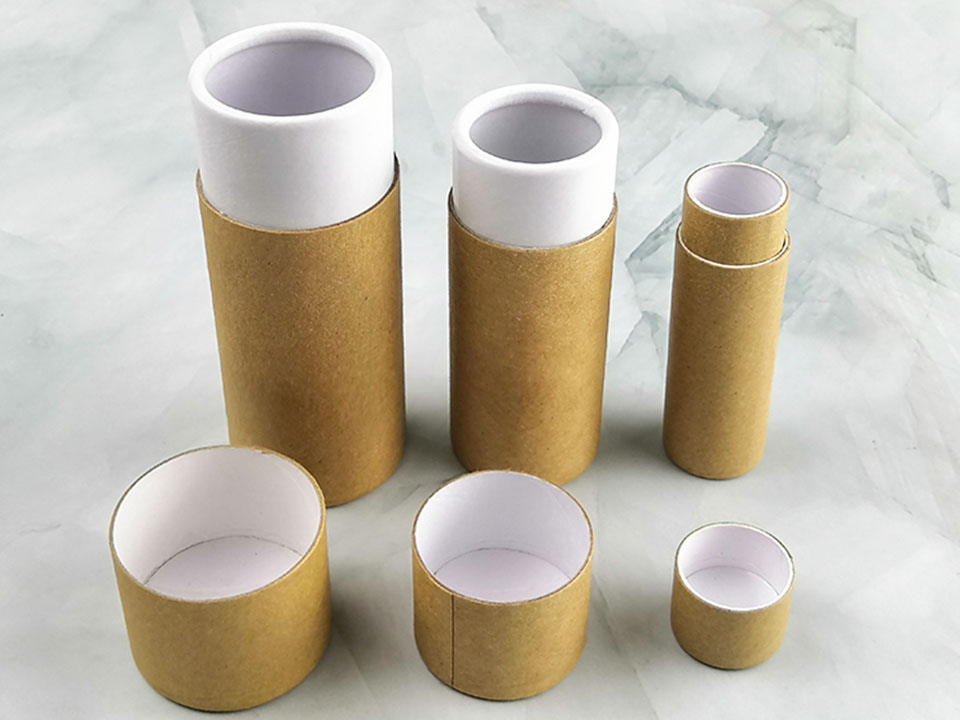
Inserts & Handles: keep things snug and carryable
- Inserts/Holders: EVA foam (precision cut), molded pulp, paperboard, or plastic trays. Foam secures fragile glass; paperboard keeps costs lighter and stays recyclable.
- Handles: rope, ribbon, or die-cut finger notches on sleeves if you want retail carrying power.
Perfume or beauty gifts? The round cylinder with rope handle nails the unboxing moment.
Real-World Lessons
- “Dont skimp the liner if you sell food.” Multiple small brands noted that unlined kraft breathed too much for oily snacks; a thin foil/PE barrier fixed freshness.
- “Soft-touch looks luxe but shows fingerprints.” Indie beauty founders love the silky feel, but they wipe boxes more on set. Matte lam + spot UV logos can be a cleaner compromise.
- “Foil is wow, but be strategic.” Makers report the biggest lift when foil is used on logos/borders rather than large fields (where micro-wrinkles can show on curves).
- “Fit tolerance matters more than you think.” Candle brands said even 0.5–1 mm mis-fit turns into friction when wax jars expand slightly in heat; always test a real product + label inside a sample tube.
- “Kraft tells an eco story by itself.” Wellness sellers shared that uncoated kraft with a simple black print converted better than over-decorated designs for earthy brands.
- “Window lids increase impulse.” For confectionery, a small PET window on the cap helped shoppers “see the good stuff,” boosting retail pick-ups (and yes, kids poke it).
No big mysteries here—just honest trade-offs and a few “wish we’d known earlier” moments.
Step-By-Step: your customization workflow
- Define product + goal: weight, fragility, shelf vs. e-com, sustainability priorities.
- Pick base board thickness: use the table above as starting point; go thicker for heavy/tall items.
- Choose mounted paper: art, kraft, metallic, or fancy. Decide lamination or coating.
- Decide structure: cap style, inner lining, bottom construction.
- Lock dimensions: ID/OD/body height/cap height. Ask for a white sample to test fit.
- Prepare print files: dieline with bleed; CMYK/Pantone callouts; foil/spot plates separated.
- Choose finishes: foil, spot UV, emboss, etc., aligned with your brand story.
- Add inserts/handles: EVA/paperboard tray, ribbons/ropes if needed.
- Pre-production sample: check color, fit, opening feel, barcode scan, and scuff resistance.
- Production & QC: then ship, store, and smile.
If you’d like tailored advice for your product category, start at Zhibang Packaging and hop to examples like custom kraft shampoo tube or cocoa nibs kraft tube for visual benchmarks.
Compliance & Safety
- For food contact, confirm food-grade papers/inks/adhesives and the right barrier liner (foil/PE).
- For cosmetics, ensure migration-safe inks and a clean insert that won’t shed.
- For child-resistant packaging (vape/pre-rolls, certain supplements), ask about certified CR mechanisms.
Frequently Asked Questions
Q1: How do I pick the right diameter? Measure your product’s widest point (include labels/caps), add a tiny clearance so it slides without scuffing. Request a white sample and try it with the real product—never eyeball it.
Q2: Will foil crack on a curved tube? Large, uninterrupted foil blocks can show micro-fractures when wrapped. Break big areas into smaller graphic elements or combine foil with spot UV for shine without stress.
Q3: Are paper tubes good for e-commerce? Yes, especially with thicker base board, all-paper crimped bottoms, and a snug insert. For very fragile glass, consider extra outer mailers or corrugated shippers.
Q4: What’s the most eco choice? Unlaminated kraft with soy/vegetable inks and an all-paper bottom is very recyclable. If you need barrier performance, use the thinnest effective liner and keep finishes minimal.
Q5: Can I do small runs? Short runs are possible with digital print or simplified finishes. Ask your supplier about MOQ and whether they can gang-run sizes for you.
Want examples by category?
- Coffee & cocoa: eco food tube ideas
- Beauty & skincare: round cylinder for cosmetics
- Oils & serums: dropper bottle kraft cylinder
- Argan oil & premium oils: glossy black tube
- Vapes & cartridges: glossy cartridge tube
- Coffee retail: coffee tube with air valve
- Tea & pantry gifts: tea cylinder with gold foil
Final little checklist
- roduct weight & fragility
- Base board thickness
- Mounted paper type & lamination
- ID/OD/body height/cap height
- Cap + bottom style
- Inner lining (food/foil/PE/plain)
- Insert/holder + handle
- Print files (bleed, Pantone, plates)
- Finishes (foil/UV/emboss)
- White sample approved
When you’re ready, you can explore styles and get tailored help right from Zhibang Packaging. If you’ve got a photo of a style you like, send it along—seriously, that makes my job (and yours) way easier. And hey, if I end up being your new tube, I promise to look sharp and work hard.






